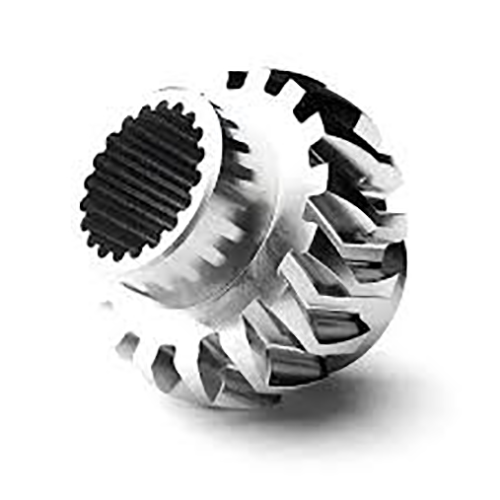
Securing exact surface quality on a machined component proves indispensable.
- Specification callouts prescribe the detailed finish for parts
- Drawings commonly cite Ra, meaning root mean square average, to measure texture
- Knowing how to read finish callouts is critical for meeting performance goals
- Prescribed surface characteristics govern lubrication, abrasion, and longevity
- It is essential to interpret the specific callout to achieve the desired outcome
Understanding Precision Engineering in CNC Machining

Numerical control machining stands as an advanced production approach by leveraging computer-aided programs machines execute intricate designs with remarkable accuracy.
- CNC equipment supports building precise items from many material classes
- Adaptable CNC processes fit the demands of aerospace, automotive, and medical markets
- Machine-controlled machining secures stable repeatability for production lots
Across prototyping through full-scale production CNC machining serves as a cornerstone in contemporary manufacturing
Comprehending CNC Machine Specifications
Decoding CNC machine specifications can feel daunting at first glance
Though a little background plus organization helps you interpret technical details effectively
Set out by finding key metrics: spindle speed, feed settings, positional accuracy, work envelope, controller
All these values combine to influence overall operational ability.
In practice greater spindle speed often suits ductile substrates whereas higher feed supports productivity.
Understanding these relationships will allow you to select the right CNC machine to match your specific requirements
Ensure you peruse vendor documentation exhaustively.
Producer documentation frequently delivers important notes and clarifies terminology
CNC Machinery: An Exhaustive Guide
G-code driven machining centers are computer-run systems for precise automated production of varied materials Operation relies on parsing G-code directives to manage cutting devices and toolpaths.
- Common CNC classes include milling machines, turning lathes, routing systems, plasma cutters
- Production processes accommodate metal alloys, plastics, woods, and composite materials
- Furthermore CNC machines allow for rapid prototyping and low-volume production runs making them valuable assets for small businesses and research centers
Fundamental CNC Machine Concepts
They illustrate synthesis of mechanical precision and computerized control logic Programmable machines execute software-driven fabrication of straightforward components and complex constructions The fundamental principle behind CNC machines is the translation of digital designs into physical forms.
- Software-driven machining
- Programmatic production integration
This process involves a series of precise movements guided by the computer program Engineers contribute by setting machining variables, overseeing runs, and assuring product standards.
The Role of Surface Finish in CNC Machining
Delivering planned surface condition during machining is necessary It determines product function and aesthetic quality Material selection, cutting strategy, and finishing steps all influence final texture.
Smoother surfaces elevate durability while coarser textures may impair utility Numerical control machining supplies multiple methods and cutters to obtain target textures.
- Including selection of alternative tool profiles |carbide alloys|tool speed tuning to deliver finish
- Furthermore secondary operations such as polishing, grinding, or sanding enhance finish
Appreciating the link between settings and surface quality helps achieve ideal finishes.
CNC Machine Basics: From Operation to Applications
CNC machining is a precise method of manufacturing that employs computer-controlled machinery to shape parts from various materials They follow G-code sequences to generate complex parts reliably A fundamental understanding of CNC machine operation including the role of G-code programming and tool selection is essential for successful machining processes
Fields benefiting from CNC include aerospace, automotive, industrial manufacturing, and electronics From complex aerospace components to precise injection molds, CNC is essential for complex parts
Surface Finish Notation for Machined Components
Accurate finish definition matters when machining parts with CNC It helps confirm that the product aligns with performance and cosmetic needs Finish specifications are often expressed via the Ra roughness standard Expressed in units like µm or mils, the metric describes average roughness amplitude.
When specifying a surface finish callout consider both the required level of smoothness and the intended application of the part

For instance a smooth surface finish might be preferred for parts that require tight tolerances or precise alignment
Rougher textures often suit parts intended for grip or high-friction contact
Apply clear finish annotations in technical drawings to state desired texture Enter the Ra specification and describe any post-process finishing or treatments.
Observe that unambiguous finish specifications are vital for manufacturing outcomes
Kinds of CNC Machines and Their Strengths
CNC machining spans many technologies and machine classes to address different operational needs They adopt CAD-to-CAM pipelines to steer cutting tools for precise part manufacture.
- Drills bore precise holes with controlled feed and speed
- Routers carve wood composite and plastics into detailed shapes and profiles
- Laser, waterjet, and plasma technologies suit intricate shapes and delicate workpieces
The choice of CNC machine depends on the specific project requirements materials being worked with and desired precision Varied CNC functionalities equip manufacturers in industries from automotive to aerospace.
Attaining Superior Surface Quality via CNC
Achieving a superior surface finish is crucial in numerous manufacturing processes and CNC machining offers an exceptional method for achieving this goal By leveraging precise control over cutting parameters such as feed rate spindle speed and tool geometry machinists can effectively manipulate the material removal process to produce surfaces with minimal imperfections Also advanced insert materials and suitable coolant practices support improved finishes Well-chosen cutting tactics plus careful setup empower manufacture of parts with exceptional surfaces.
Securing Surface Finish Through CNC Programming
Controlling finish within programming is key to obtaining target surface results The chosen machining parameters including feed rate spindle speed and cutting tool geometry exert a significant influence on the final surface texture Deliberate parameter selection and optimized lubrication enable near-flawless finishes.
- Additionally routine tool checks and upkeep maintain consistent finish quality Also ongoing tool care and inspection support sustained finish reliability Besides that systematic tool upkeep and monitoring ensure sustained surface quality
- To perfect surface results factor in material, roughness, and intended application
- Path simulation offers insights to adjust cutting settings and reduce defects
- Besides that systematic tool upkeep and monitoring ensure sustained surface quality
